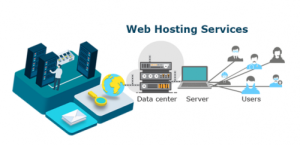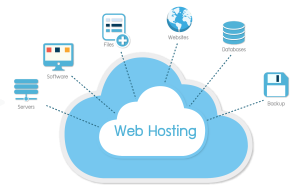Mastering WordPress Hosting with GoDaddy: A Step-by-Step Guide to Seamless Website Management
In the vast landscape of web hosting, GoDaddy stands out as a prominent choice for individuals and businesses alike, offering an array of hosting services. For bloggers and content creators leveraging the power of WordPress, GoDaddy provides an excellent platform to host and manage your site. In this comprehensive guide, we’ll take you through a step-by-step process, from selecting a hosting plan to optimizing your WordPress site for peak performance.
1. Choosing the Right GoDaddy Hosting Plan for WordPress
What is WordPress hosting, and why choose GoDaddy for it? WordPress hosting is specialized hosting optimized for running WordPress websites. GoDaddy, a reputable web hosting provider, offers WordPress hosting with features like automatic updates, built-in security, and excellent performance. Choosing GoDaddy for WordPress hosting provides a user-friendly platform and reliable support.
How do I install WordPress on GoDaddy hosting? Installing WordPress on GoDaddy hosting is a straightforward process. After purchasing a Managed WordPress Hosting plan, log in to your GoDaddy account, navigate to the hosting dashboard, and click on the ‘WordPress’ section. Follow the on-screen instructions to install WordPress, configure settings, and set up your website.
What are the advantages of using GoDaddy’s Managed WordPress Hosting? GoDaddy’s Managed WordPress Hosting comes with several advantages, including automatic WordPress updates, daily backups, enhanced security, and optimized performance. The hosting environment is specifically designed for WordPress, ensuring a seamless experience for users without the need for manual technical configurations.
Can I use my existing domain with GoDaddy’s WordPress hosting? Yes, you can use your existing domain with GoDaddy’s WordPress hosting. During the setup process, you’ll have the option to either register a new domain or use an existing one. Follow the prompts to link your domain to your WordPress hosting account.
What themes are available for WordPress on GoDaddy? GoDaddy provides a variety of WordPress themes that you can choose from to customize the appearance of your website. These themes cover a range of styles and functionalities, allowing you to find one that suits your blog or business. You can explore and install themes directly from the WordPress dashboard.
Does GoDaddy offer support for WordPress-related issues? Yes, GoDaddy offers dedicated support for WordPress-related issues. Their support team is knowledgeable about WordPress and can assist with questions regarding installation, configuration, theme customization, and other aspects of managing a WordPress site. Support is available through live chat, email, and phone.
Is it easy to scale my WordPress site on GoDaddy hosting? Scaling your WordPress site on GoDaddy hosting is convenient. If your website experiences growth and requires additional resources, you can easily upgrade your hosting plan. GoDaddy provides seamless options for scaling to ensure your website can handle increased traffic and demands.
Are there any security features included in GoDaddy’s WordPress hosting? Yes, GoDaddy’s Managed WordPress Hosting includes built-in security features. These features typically include malware scanning, automated daily backups, and SSL certificates for secure data transmission. Additionally, you can enhance security further by configuring additional security plugins from the WordPress dashboard.
Can I migrate my existing WordPress site to GoDaddy hosting? Yes, GoDaddy provides tools and support for migrating existing WordPress sites to their hosting platform. Whether you are transferring from another hosting provider or upgrading within GoDaddy, their support team can guide you through the migration process to ensure a smooth transition.
What additional services does GoDaddy offer for WordPress users? In addition to hosting, GoDaddy offers various services that can complement your WordPress site. These include professional email services, domain privacy protection, SSL certificates, and online marketing tools. Exploring these services can enhance the overall functionality and security of your WordPress website.
a. Navigate to GoDaddy’s Website:
Start by visiting the GoDaddy website. Once there, explore the ‘Hosting’ section to view the different hosting plans available. For WordPress, you’ll want to focus on Managed WordPress Hosting.
b. Select a Managed WordPress Hosting Plan:
GoDaddy offers various Managed WordPress Hosting plans tailored to different needs. Choose a plan that aligns with your website’s current requirements and potential growth. Consider factors such as the number of websites you plan to host, storage, and monthly visitors.
c. Review Plan Details and Features:
Each plan comes with specific features, such as automatic WordPress updates, daily backups, and built-in security. Review these details carefully to ensure they meet your website’s needs. Pay attention to any promotional pricing, and be aware of the regular renewal rates.
d. Add Domain and Configure Options:
During the sign-up process, you’ll have the option to register a new domain or use an existing one. Follow the prompts to configure additional options, such as domain privacy and email services, according to your preferences.
e. Complete the Purchase:
Once you’ve customized your plan and added the necessary options, proceed to checkout. Review your order summary, enter payment details, and complete the purchase.
2. Setting Up WordPress on GoDaddy Hosting
a. Access Your Hosting Account:
After the purchase is complete, log in to your GoDaddy account. Navigate to the ‘My Products’ section, and you’ll find your Managed WordPress Hosting listed.
b. Install WordPress:
Locate the ‘Manage’ button next to your hosting plan and click on it. In the hosting dashboard, find the ‘WordPress’ section and select ‘Install Now.’ Follow the on-screen instructions to complete the installation.
c. Configure WordPress Settings:
Once the installation is complete, you’ll be prompted to set up your WordPress site. Enter your site name, tagline, and choose an admin username and password. Take note of these credentials as they’ll be essential for managing your WordPress site.
d. Explore the WordPress Dashboard:
Access the WordPress dashboard by navigating to ‘yourdomain.com/wp-admin’ and log in using the admin credentials. Familiarize yourself with the dashboard, where you can create and edit posts, customize the appearance, and manage plugins.
3. Optimizing Your WordPress Site on GoDaddy
a. Choose a WordPress Theme:
GoDaddy offers a variety of WordPress themes that you can use to customize the look and feel of your site. Explore the ‘Themes’ section in the WordPress dashboard and choose a theme that complements your content and branding.
b. Install Essential Plugins:
Enhance the functionality of your WordPress site by installing essential plugins. Consider plugins for SEO optimization, security, caching, and social media integration. GoDaddy’s Managed WordPress Hosting is optimized for performance, but additional plugins can further enhance your site.
c. Configure SEO Settings:
Improve your site’s visibility on search engines by configuring SEO settings. Use a plugin like Yoast SEO to optimize individual posts and pages for relevant keywords. This step is crucial for attracting organic traffic to your blog.
d. Set Up Backups and Security:
GoDaddy’s Managed WordPress Hosting includes daily backups and built-in security features. However, it’s wise to configure additional security measures and regularly check your backups. This ensures the safety of your content in case of unexpected events.
e. Monitor Website Performance:
Keep an eye on your website’s performance using tools like Google PageSpeed Insights. Optimize images, utilize browser caching, and consider a content delivery network (CDN) to enhance page load times. A faster website contributes to a better user experience.
4. Scaling Your WordPress Site with GoDaddy
a. Upgrade Your Hosting Plan:
As your blog grows, you may need to upgrade your hosting plan for additional resources. GoDaddy allows seamless upgrades, ensuring your website can handle increased traffic and resource demands.
b. Explore Additional Services:
GoDaddy offers a range of additional services, such as professional email, SSL certificates, and online marketing tools. Explore these services to enhance the overall functionality and security of your WordPress site.
c. Engage with GoDaddy Support:
If you encounter any issues or have questions about your WordPress site, GoDaddy’s customer support is readily available. Utilize their live chat, email, or phone support for assistance and guidance.
5. Conclusion
Navigating the world of web hosting and WordPress may seem daunting at first, but with GoDaddy’s user-friendly interface and robust features, you can establish and grow your blog seamlessly. By following this step-by-step guide, you’ve not only set up your WordPress site with GoDaddy but also optimized it for performance and scalability. As you embark on your blogging journey, remember that ongoing maintenance, content creation, and engagement are key to building a successful online presence. Happy blogging!



